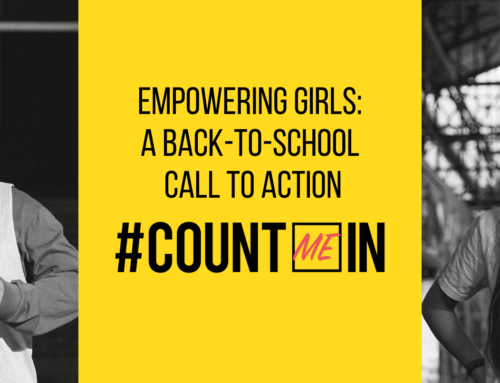
Her daughter wanted to be Katniss Everdeen, the skillful archer and powerful main character from the movie The Hunger Games. With much excitement, they hit the stores.
To their dismay, choices were limited to frilly pink, sequined blue, short skirts, tall boots, and feathery boas. How about a policewoman with jewelled handcuffs and a short skirt, in a provocative pose? Or a rock star outfit with a bustier and fishnet stockings? Many of the costumes were designed to objectify girls, even those being sold to 5- to 12-year-olds.
When my friend refused to buy her daughter one of the sexualized outfits, the trip ended in frustration and tears. “OK, mom, I’ll just go as a cute little cat!” her daughter said. A far cry from the female warrior she wanted to be.
The trend toward hypersexualized costumes for young girls is downright scary.
When I was a girl, my home-made costumes included a football player with a black eye, a scientist with huge glasses and a white coat, a cave woman with teased hair carrying a huge club, a witch, and a scarecrow. Maybe not typical choices for a girl, but certainly not weak, sexualized characters.
Many people, including our own daughters, may argue that Halloween is just one night of the year. What’s the harm if they want to dress up as a “cutie cop” or “foxy firefighter” for a few hours?
But women and girls aren’t only sexualized one night of the year – this kind of message is delivered 365 days a year, 24 hours a day, through TV shows, ads, movies, video games, you name it.
Research shows this constant hyper-sexualization is actually harming girls’ mental health, undermining girls’ confidence, contributing to eating disorders and depression, and decreasing girls’ ability to develop a healthy sexual self-image. No wonder only 14% of girls in Grade 10 say they feel confident.
The trend toward Halloween hyper-sexualization is a symptom of a larger social problem and it deserves to be challenged. We can push back and help our kids see the difference between stereotypes and strong characters.
Here are three ideas for how to do it:
1) Tell costume companies what you think: American mom Lin Kramer had the right idea when she recently posted an open letter to costume retailer Party City on Facebook. She criticized the company’s lack of career-themed costumes for girls, and got into specifics about a police officer costume for young girls: “Generally speaking, real-life uniformed female police officers do not wear short skirts and low-cut shirts, but instead wear exactly the same slacks and shirts as their male counterparts.” Kramer also pointed out that the company could offer the same costumes to girls and boys, rather than aligning children’s choices with “antiquated views of gender roles.” Party City did respond to Kramer’s letter, saying they appreciated her feedback, but later removed her post from the company’s Facebook page. Still, many parents shared and applauded her post. Last year, Value Village pulled some girls’ costumes from its shelves after a B.C. mom complained. Imagine if parents called out costume retailers en masse? They would be in for a fright!
2) Consider a DIY costume: My friend was absolutely right to defy rather than buy into what costume retailers are selling. If you’re not happy with the choices in stores, a home-made outfit is a great way to boycott them and get creative with your kids. Who needs those 100% polyester suits when you can come up with something that’s both original and empowering?
3) Create a teaching moment: Help your children to think critically about the real messages behind the costumes produced for girls and young women. If they want to be a firefighter, for example, encourage them to research firefighters uniforms and compare them to what’s being sold in stores. Ask them why the costumes for girls and boys are so different, and what messages they send. This way, they’ll begin to recognize hyper-sexualization for themselves and make informed choices in the future.
We can all play a role in helping to build strong, resilient girls – not just for a Halloween treat but for every day of the year!
Learn More
Take Action
- Support our work to empower girls – donate now!
- Sign up for our e-newsletter to have our latest stories and resources sent to your inbox.
- Follow us on Facebook and Twitter to join a national conversation on consent.







